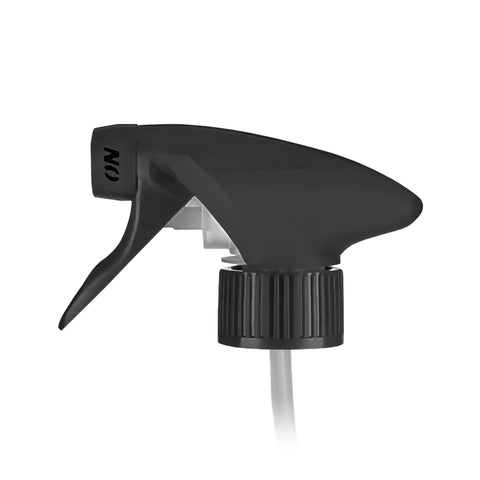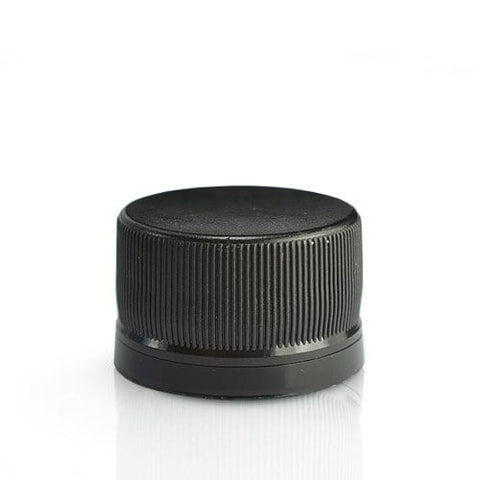Innovation Chem Packaging Deep-Dive Series
1. Anatomy of a Trigger Sprayer
| Component | What It Does | Typical Options |
|---|---|---|
| Head / Nozzle | Converts piston pressure into a spray or jet | Fan ↔ jet adjuster, foamer insert, child-resistant lock |
| Piston & Spring | Generates momentary pressure (~15 bar) | Acetal or PP piston; stainless or plastic spring |
| Gasket / Seal | Keeps liquid out of the piston housing | EPDM, NBR, Viton® (FKM) |
| Dip-tube | Transfers product to the pump | PE or PP, weighted end, mesh filter |
Output rate: Household heads dispense 0.9 – 1.6 ml per stroke; high-output (2 ml+) versions suit industrial degreasers.
2. Getting the Spray Pattern Right
- Fan (≈ 70 – 80°): Even coverage for kitchens & bathrooms.
- Coarse jet: Long-range wheel and arch cleaning.
- Off / lock: Child-safety and shipping security.
For foaming wheel cleaners, add a mixing mesh insert behind the nozzle to generate thick clingy foam.
3. The Critical Role of Gaskets & Seals
| Seal Material | Best With | Chem-Resistance Highlights | Cost |
|---|---|---|---|
| EPDM | Water-based & alkaline cleaners (pH 8 – 12) | Excellent alkali, bleach & peroxide resistance; poor with oils/solvents | £ (baseline) |
| Viton® (FKM) | Oils, solvents, aggressive acids | Outstanding solvent & acid tolerance, high-temp stability | ££ (≈ +0.03–0.05 per trigger) |
| Nitrile (NBR) | Light oils, neutral pH cleaners | Good oil resistance; weak in strong alkali or acids | £ |
Always specify the seal material when ordering. A Viton upgrade costs pennies—far cheaper than a pallet-wide product recall.
4. Dip-Tube Engineering
- Length: Trim to 3 mm above the bottle base to avoid early “air-suck.”
- Material: PE (standard) or rigid PP for hot-fill (> 60 °C) or solvent blends.
- Weighted ends / mesh filters: Add ceramic/stainless weights for foaming cleaners and 50 – 100 µm mesh to stop sediment clogging valves.
5. Performance & Quality Tests
| Test | Method | Pass Criteria |
|---|---|---|
| Output Consistency | 10 strokes → weigh total mass | ± 10 % variance |
| Leak Test | Invert filled bottle 24 h @ 40 °C | No wetting outside closure |
| Chemical Soak | Submerge trigger 7 days @ 40 °C | No swelling > 5 %, no cracks |
| Drop Test | 1 m drop on trigger & base | Fully functional afterwards |
6. Sustainability Considerations
- All-plastic triggers: PP spring & piston eliminate hard-to-recycle metals.
- PCR PP housings: Up to 50 % recycled content cuts virgin resin.
- Locking nozzles: Reduce secondary shrink-wrap during transport.
7. Selection Cheat-Sheet
| Product Type | pH / Solvent Load | Recommended Seal | Output | Special Note |
|---|---|---|---|---|
| Kitchen Degreaser | pH 10, low solvent | EPDM | 1.0 ml | Fan/jet adjuster |
| Wheel Cleaner (acid) | pH 2 | Viton | 1.2 ml | Acid-resistant spring |
| Solvent Tar Remover | Neutral pH, high solvent | Viton | 0.9 ml | Foil induction-seal under cap |
| Bathroom Limescale Foamer | pH 2 | EPDM | 1.4 ml | Foamer mesh insert |
| Industrial Degreaser Refill | pH 12, high chelate | EPDM | 2.0 ml | Weighted dip-tube |
8. Key Take-Aways
- Spray pattern = UX. Match fan vs jet to the application.
- Seal choice is critical: Viton upgrades prevent leaks in solvent or acid formulas.
- Dip-tube design governs true yield—trim correctly and add weights/filters as needed.
- QC early. Leak tests at 40 °C catch failures before pallets ship.
Need help speccing the perfect trigger sprayer? Contact the Innovation Chem packaging team—we’ll match head style, seal material and dip-tube design to your exact formulation, ensuring every pull of the trigger is flawless.


